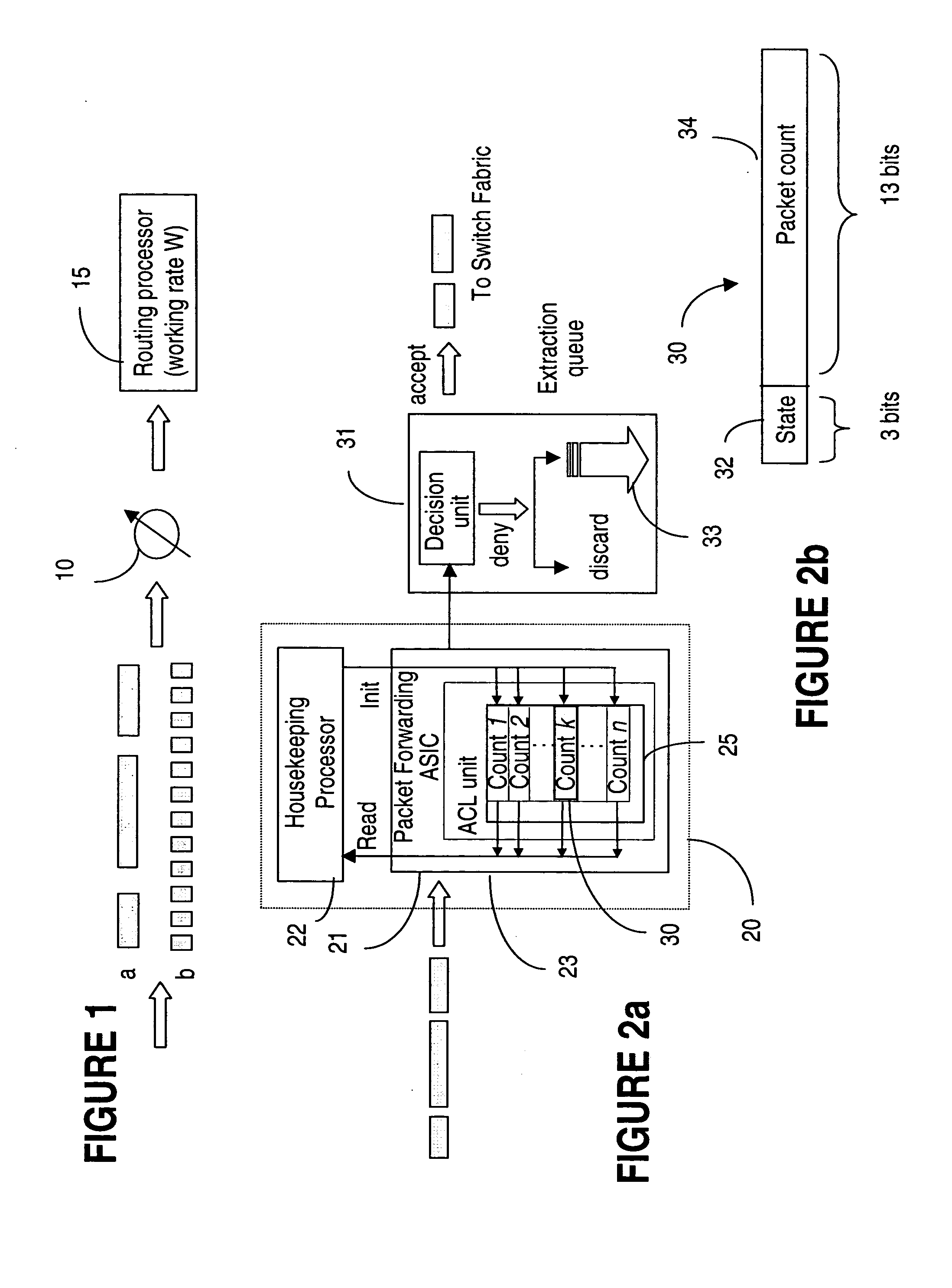Metering packet flows for limiting effects of denial of service attacks
a packet flow and packet technology, applied in the field of communication networks, can solve problems such as system crash, cpu capacity, and difficulty in detecting and stopping malicious requests and packets, and achieve the effect of simple and fast implementation
- Summary
- Abstract
- Description
- Claims
- Application Information
AI Technical Summary
Benefits of technology
Problems solved by technology
Method used
Image
Examples
Embodiment Construction
[0023] The ACL (access control list) policy engine manages a list of rules that can be used for IP packet filtering, IP route filtering etc. Each rule in an access list specifies a certain condition and an action to take place when a match is found. To activate the function of IP packet filtering, one has to first build an access list and then associate the list with the interface's ingress / egress datapath. Each packet received and / or transmitted by that interface is then examined against the rules specified in the access list associated with that interface and in the order they are listed, to determine if the packet should be forwarded or dropped. Other potential actions may also be implemented.
[0024] List management allows users to manipulate the whole list or a rule as a single entity. This functionality allows the user to add a rule to an access list or delete a rule from an access list, or change an existing rule.
[0025]FIG. 1 illustrates the drawbacks of using byte rate limit...
PUM
 Login to View More
Login to View More Abstract
Description
Claims
Application Information
 Login to View More
Login to View More - R&D
- Intellectual Property
- Life Sciences
- Materials
- Tech Scout
- Unparalleled Data Quality
- Higher Quality Content
- 60% Fewer Hallucinations
Browse by: Latest US Patents, China's latest patents, Technical Efficacy Thesaurus, Application Domain, Technology Topic, Popular Technical Reports.
© 2025 PatSnap. All rights reserved.Legal|Privacy policy|Modern Slavery Act Transparency Statement|Sitemap|About US| Contact US: help@patsnap.com



